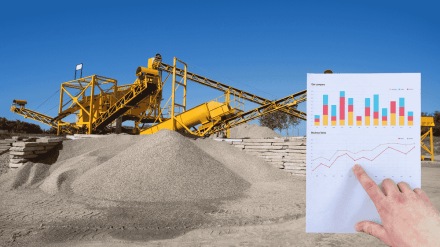The cement sector is witnessing a solid start to FY26, with companies reporting higher volumes, improved price realisations, and stronger profitability in Q1FY26. However, the key question is whether the sector can sustain this growth amid the expected GST restructuring, rising capex, and the moderation in prices seen in July 2025. Here is what brokerage firms expect.
A look at Q1FY26 of cement sector
Axis Securities in its report noted that cement makers under its coverage posted a 10 per cent year-on-year growth in volumes and a 16 per cent rise in revenue during the June quarter. Operating profits jumped 40 per cent, while net profit surged 45 per cent, surpassing expectations.
EBITDA per tonne increased 30 per cent year-on-year to Rs 1,070, though it fell slightly compared to the March quarter. Blended realisations improved 4 per cent to Rs 5,510 per tonne, aided by higher prices across regions. Lower fuel and power costs, which dropped 7 per cent to Rs 1,010 per tonne, also supported margins.
“The cement sector has started FY26 on a strong footing. A combination of robust demand, resilient pricing, and disciplined cost management is driving impressive profit growth,” Axis Securities said.
Axis Securities expects cement demand to grow at a 7–8 per cent CAGR between FY24 and FY27, with consolidation favouring larger players. Other brokerage firm Nuvama also expects 6–7 per cent volume growth for the full year of FY26 citing softening in cement prices.
Cement prices ease in July, Government capex shows sharp rebound
Nuvama Institutional Equities noted that cement prices softened in July with the onset of monsoon but some hikes announced in August in the South are holding up. “Price discipline in the industry is positive,” it said.
The brokerage pointed out that government capex rebounded sharply after slowing during the election year. Central capex rose 52 per cent year-on-year in Q1FY26 to Rs 2.8 lakh crore, nearly a quarter of the full-year target. State spending also increased 29 per cent, while central public sector enterprises reported a 3 per cent rise in April–July.
“Despite short-term headwinds, the overall outlook is improving with both volumes and prices showing signs of stability. We remain optimistic about space,” Nuvama said.
GST cut may boost cement sector: Motilal Oswal
The latest on the proposed GST cuts. The GoM recently accepted scrapping the 12 per cent and 28 per cent tax slabs. The government is planning a new GST structure with slabs of 5 per cent and 18 per cent, while keeping 40 per cent for ‘sin goods’. The proposal will now move to the GST Council and there are expectations of final reforms being implemented by Diwali. Cement, which is currently taxed at 28 per cent, could shift to the 18 per cent bracket if the proposal goes through.
Earlier Motilal Oswal had pointed out that a GST cut would lower cement prices by 7–8 per cent. “Ultratech and JK Cement are well-placed to gain from improved sentiment and demand recovery in infra and housing,” it noted.
Lower GST, easing inflation may aid consumption recovery: Nomura
Nomura had also said earlier that lower GST, combined with easing inflation and supportive monetary policy, could aid consumption recovery in the second half of FY26. “Lower GST rates for cement are likely to benefit real estate developers with a reduction in construction costs,” Nomura said.
GST cut may have limited impact on cement demand: Kotak
Kotak Institutional Equities, however, had argued that the GST cut may not have a significant effect on cement demand. “Cement demand has low price elasticity. Even if GST rates are cut, it may not directly translate into higher sales volumes,” it said. Just to remind our readers that this report was created before the GoM decided on scrapping the 12 per cent and 28 per cent tax slabs.
The brokerage pointed out that cement accounts for a smaller portion of real estate costs compared to land. Still, Kotak highlighted that cement companies are generating steady returns, with large players delivering cash returns on capital invested (CROCI) in the range of 12 to 15 per cent.
